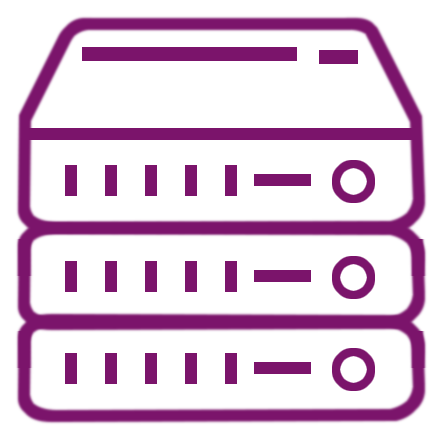What is an AI Proof of Concept?
An AI Proof of Concept (AI PoC) is a structured project designed to test whether an AI solution can address a specific business problem effectively. It allows organizations to evaluate technical feasibility, expected outcomes, and potential challenges before committing to full-scale implementation. AI PoCs provide actionable insights into how AI can add value, enabling stakeholders to make informed decisions. By validating concepts early, businesses reduce risk, optimize resource allocation, and pave the way for enterprise AI adoption.
Why is an AI PoC important for businesses?
AI PoCs allow organizations to explore potential AI solutions without heavy upfront investment. They help validate whether a model is technically feasible, whether the data is sufficient, and whether the solution will generate meaningful business outcomes. PoCs also uncover risks and challenges, such as infrastructure limitations or workflow adjustments. By demonstrating value early, AI PoCs build stakeholder confidence and reduce uncertainty, making them a critical step toward successful enterprise AI adoption.
How does an AI PoC differ from a pilot project?
An AI PoC focuses on testing feasibility and proving the AI concept works in a controlled environment. A pilot project, in contrast, implements the solution in a real or near-production environment to test scalability, integration, and user acceptance. While the PoC answers "can this work?", a pilot answers "does it work in practice?" Understanding this distinction helps organizations plan a phased approach, ensuring resources are used effectively and enterprise AI adoption is more predictable and structured.
What are the main goals of an AI PoC?
An AI Proof of Concept (PoC) helps organizations test the viability and impact of AI initiatives before full-scale deployment.
4 Main goals of an AI PoC:
- Validating technical feasibility: ensuring the AI model can deliver expected results.
- Demonstrating business value: quantifying potential improvements or efficiencies.
- Assessing data readiness: checking availability, quality, and relevance of datasets.
- Identifying infrastructure requirements: determining computing and storage needs.
Achieving these goals ensures that organizations can make informed decisions about scaling AI initiatives and strengthens enterprise AI adoption planning.
How do organizations define success metrics for an AI PoC?
Success metrics provide measurable indicators to assess whether a PoC achieves its objectives. Metrics typically include model accuracy, processing speed, and efficiency improvements. Qualitative factors, such as stakeholder satisfaction and alignment with strategic goals, are also important. Defining metrics at the outset ensures that results are meaningful and actionable. By evaluating both technical and business outcomes, organizations can make informed decisions on whether to scale the AI solution for full enterprise AI adoption.
What are the typical steps in developing an AI PoC?
Developing an AI Proof of Concept (PoC) requires a clear process to test AI capabilities and generate actionable results.
6 Key steps to develop an AI PoC:
- Defining the problem and objectives to align stakeholders.
- Collecting and preparing data to ensure it is clean and relevant.
- Selecting AI models or algorithms appropriate for the use case.
- Testing and validating performance against objectives.
- Evaluating infrastructure requirements for potential scaling.
- Reporting findings and recommendations for next steps.
These steps help ensure the PoC generates actionable insights while minimizing risk.
Which methodologies are commonly used in AI PoCs?
Agile and iterative methodologies are widely used in AI PoCs because they allow continuous refinement based on test results. Design thinking ensures AI solutions align with user needs and deliver practical business value. Data-driven approaches focus on model accuracy, reliability, and validation. Combining these methods ensures that technical and business aspects are addressed, reducing the risk of failure and supporting the organization's broader enterprise AI adoption strategy.
What are common challenges during AI PoCs?
AI PoCs may face obstacles that can reduce accuracy or slow progress.
Common challenges during AI PoCs include:
- Poor data quality: incomplete or inconsistent datasets can reduce model accuracy.
- Unclear objectives: vague goals may lead to irrelevant outcomes.
- Limited technical expertise: insufficient AI or data science skills can slow progress.
- Infrastructure constraints: inadequate computing power can restrict testing.
Identifying these challenges early helps organizations design more effective PoCs and increases the likelihood of success, laying the groundwork for enterprise AI adoption.
What tools and technologies are commonly used in AI PoCs?
AI PoCs rely on software frameworks, data platforms, and infrastructure to build, test, and run models efficiently.
4 Key tools and technologies used in AI PoCs:
- Machine learning frameworks: TensorFlow, PyTorch, scikit-learn.
- Data processing platforms: Apache Spark, Hadoop, or cloud analytics tools.
- Infrastructure: GPU-enabled servers, hybrid cloud, or edge computing.
- Collaboration tools: version control and workflow management platforms.
Using these technologies ensures PoCs are efficient, scalable, and capable of producing actionable insights that guide enterprise AI adoption.
How does data influence an AI PoC?
Data is critical to any AI PoC. Its quality, quantity, and relevance directly affect model accuracy and reliability. Insufficient or biased data can produce misleading outcomes, while clean and representative datasets enable more accurate testing and validation. Organizations must assess data readiness, perform preprocessing, and align datasets with business goals. Proper data handling reduces risk, improves insights, and lays a solid foundation for enterprise AI adoption.
How can risks be mitigated in an AI PoC?
To mitigate risks in an AI proof of concept (PoC), you should employ several strategies. Start by setting clear objectives to align expectations and ensure high-quality, representative data. It's also crucial to select models that are appropriate for the problem's scope and to implement strong governance and monitoring frameworks. These practices help reduce technical and operational risks, ensuring the insights from the PoC are reliable.
How long does an AI PoC typically take?
The duration of an AI PoC ranges from a few weeks to several months. Simpler projects focusing on technical feasibility may take less time, while complex PoCs involving multiple data sources, models, and stakeholder engagement require longer periods. Proper planning of timelines ensures that PoCs generate meaningful insights, provide sufficient evaluation, and support enterprise AI adoption decisions effectively.
How does an AI PoC differ from a prototype or MVP?
A prototype demonstrates design and functionality, while an MVP tests minimal features in real-world conditions. An AI PoC, however, focuses on technical feasibility, model performance, and measurable business value. The PoC provides evidence that an AI solution can work as intended and justifies further investment, guiding enterprise AI adoption strategies in a risk-controlled manner.
What common failure points exist in AI PoCs?
AI PoCs can fail if certain issues are not addressed.
4 Common failure points in AI PoCs:
- Poor or biased data reducing model accuracy.
- Unclear objectives leading to irrelevant results.
- Lack of stakeholder engagement slowing progress.
- Inadequate infrastructure limiting testing.
Addressing these failure points proactively through planning, governance, and iterative testing improves PoC success rates and supports enterprise AI adoption.
How can organizations measure ROI from an AI PoC?
Measuring ROI helps determine the business value of a PoC.
Key methods to measure ROI from an AI PoC are listed below:
- Quantitative metrics: cost savings, efficiency gains, revenue impact.
- Qualitative metrics: improved decision-making, stakeholder confidence.
- Comparative analysis: evaluating performance before and after AI implementation.
Well-defined success metrics allow organizations to assess value accurately, justify further investment, and support enterprise AI adoption.
How is infrastructure evaluated during an AI PoC?
Infrastructure evaluation examines computing power, storage, and network capabilities required for AI model training and testing. GPU availability, cloud platforms, and hybrid AI solutions are considered to ensure scalability. Evaluating infrastructure also identifies potential bottlenecks, helping organizations plan for full-scale deployment and smooth enterprise AI adoption. Proper evaluation ensures performance reliability and cost efficiency when scaling AI solutions.
How does a PoC transition to full-scale AI deployment?
Transitioning involves scaling validated models, integrating solutions into enterprise systems, implementing governance, and monitoring performance. Lessons from the PoC guide infrastructure adjustments, workflow integration, and stakeholder training. By applying insights from testing, organizations can ensure that the AI solution performs reliably at scale, enabling effective enterprise AI adoption and minimizing operational disruptions.
What best practices ensure a successful AI PoC?
Following best practices increases the likelihood of PoC success and provides actionable insights.
Key practices to ensure a successful AI PoC include:
- Define clear objectives and expected outcomes.
- Select suitable AI models and algorithms.
- Ensure high-quality and relevant data.
- Involve stakeholders and decision-makers.
- Conduct iterative testing and document results.
- Leverage partner expertise and validated infrastructure.
These practices help deliver successful PoCs that inform strategy, justify investment, and accelerate enterprise AI adoption.



